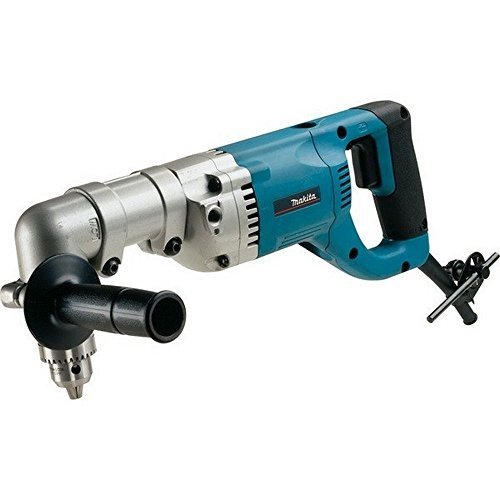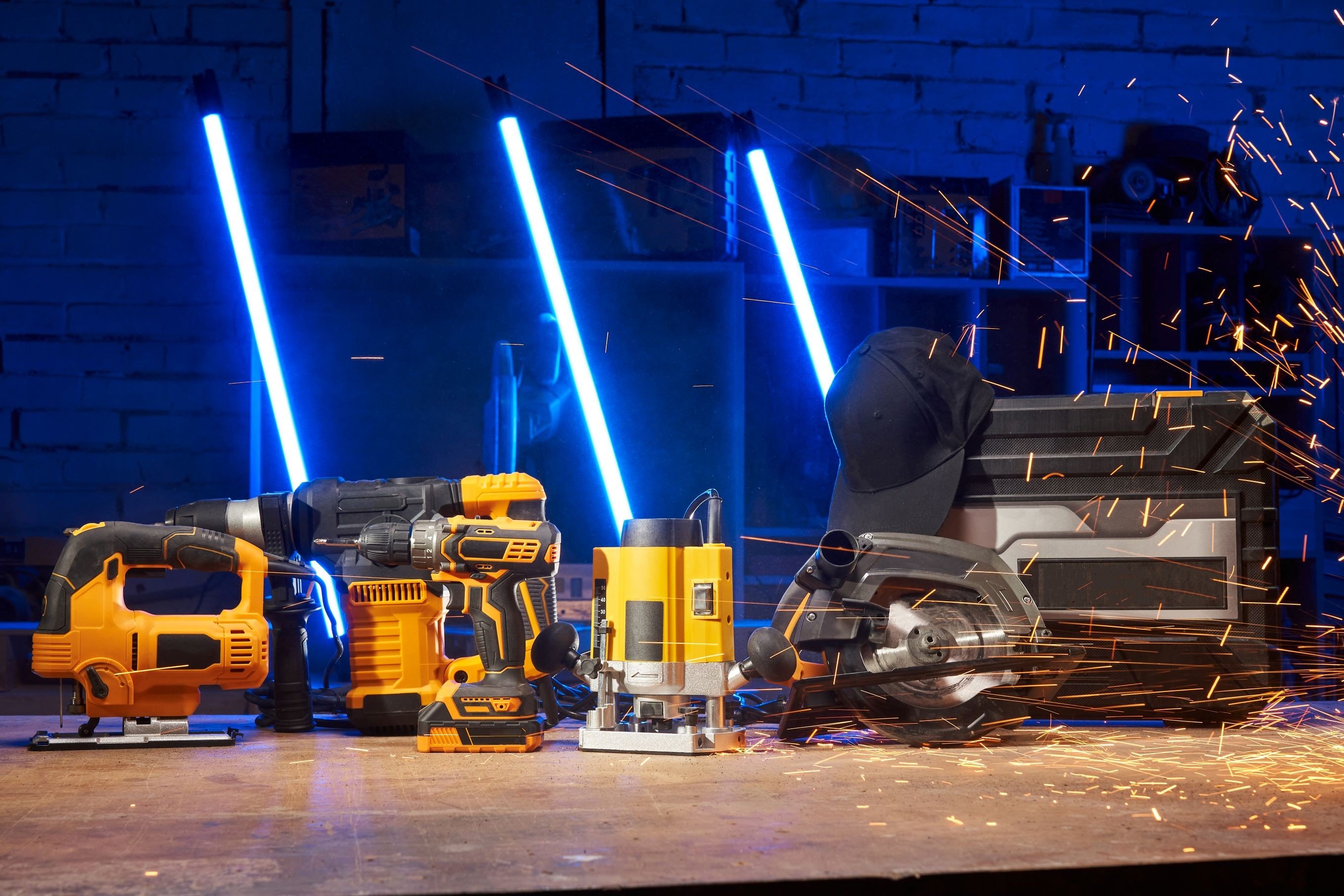The 10 Scariest Things About Shop Power Tools
페이지 정보
작성자 Max 작성일25-03-03 07:26 조회2회 댓글0건관련링크
본문
 The Workhorse of the Shop Power Tools
The Workhorse of the Shop Power ToolsHand-held power tools are powered by internal combustion, electricity, or compressed air. They can be used to cut, drill grind or sand materials.
 A table saw is one of the most vital power tools that every woodworker ought to own. It is able to handle nearly any cutting task. Consider a miter-saw stand and a drill/driver combo.
A table saw is one of the most vital power tools that every woodworker ought to own. It is able to handle nearly any cutting task. Consider a miter-saw stand and a drill/driver combo.Table Saw
A table saw is the mainstay of the shop power tools and may be the most versatile woodworking tool. It is able to cut, cross-cut, miter cut and even dado and rabbet stock. It is also able to cut angles for chests, frames or planters.
The saw is equipped with a large circular blade that spins at high speeds. The saw has large tables that support the stock while it moves through the blade. Blade guards protect the blade of the saw, preventing wood from being caught and thrown back to the operator. The saw is also protected by a splitter, or the riving blade. This is a vertical projection directly behind the blade, and may be in the shape of pin or fin.
Contractor-style table saws have an extra motor that is hinged from the rear of the saw and drives the blade with two or more rubber V-belts. These saws are used primarily by carpenters but are also available in home shops. They come with more features than portable saws, like a sliding miter table.
Smaller table saws come with a smaller, lighter-duty motor which is usually driven by belt. These saws have less features and are more geared towards enthusiasts and home use. Many feature a sliding miter table, which allows the user to make complex cuts such as those for mirror and picture frames, drawers, boxes and cases.
Using a table saw properly is important to avoid injuries. Always remain to the left of the blade when you are making cutting rips and keep your hands clear of the saw's edge. It is crucial to use a guide stick or push block when cutting, especially in workplace settings where HSE guidelines require you to stay at least an arm's length away from the blade.
Many woodworking projects require tapered legs, and the simplest and fastest method to cut them is using a tablesaw and a simple tapering jig you can make at home. A tapering jig is adjustable to any angle that is between zero and fifteen degrees. This allows you to cut any tapered legs in your workshop.
Bandsaw
A bandsaw is a tool to cut metal and wood into different shapes. It is a great tool for custom fabrication. It's also a useful tool for woodworking projects such as cabinetry and furniture. The saw can be used to make curved cuts, including circles, and can cut through many types of materials, including ice.
There are two types of bandsaws that are horizontal and Toolshop Near Me (This Internet site) vertical. Vertical bandsaws are typically used for cutting freehand and excel at resawing and shop power tools cutting curved cuts, whereas horizontal bandsaws are more adept at cutting straight and cutting angles. The saw can be operated either manually or through powered feed systems. Manual bandsaws require that the user manually lower and lift the blade after each cut. The powered feed systems are more efficient.
When using bandsaws, it is important to prioritize safety. Always wear protective gear, including safety goggles and ear protectors to guard against dust and noise. Keep your feet and hands away from the blade to prevent accidents and injuries. It is also crucial to correctly set the saw for safety, making sure that the blade is secure and aligned correctly, and the guides are adjusted.
Based on the type of material you are cutting, you may have to adjust the feed rate and saw speed to achieve the optimal results. Regular maintenance and adjustments to the blade tension and tracking will ensure that your bandsaw produces accurate and clean cuts while prolonging its lifespan.
The blade of a bandsaw will usually be made from heat-treated steel to resist the wear and Shop Power Tools tear that comes from frequent use. The teeth are also welded to the saw which gives it a unique shape and preventing them from getting removed or damaged by a sudden shock.
The throat depth of bandsaws determines the length of a piece of wood it can cut. The larger throat depths permit you to cut larger pieces of wood, and are also helpful for resawing or cutting, both of which are techniques that involve cutting across the grain. It's also worth noting that some bandsaws come with tilting tables, which could be beneficial for making certain types of angled cuts, or for recycling scrap wood.
Dust Collector
Woodworking tools create a lot of dust and chips that must be collected in order to protect your health and keep your shop with tools clean. shop and the longevity of your equipment. The type of collector you require will depend on the number and size of the power tools you employ in your woodshop as well as the frequency with which they are used. The most effective woodworking dust collection systems provide superior filtration to eliminate tiny particles and allow you to breathe healthier, more comfortable and more comfortable as you work.
If you're operating a small one-man workshop or a large production woodworking facility, Nederman has dust collection systems that meet your needs. Our woodworking dust management, waste management, and combustible-dust solutions blend environmental care with improvements in the efficiency of machines.
There are many types of woodshop dust collection systems on the market and include:
A dust extractor that is basic can replace your shop vac. These devices connect to power tools online tools using an hose that connects to the dust port on the machine. The hose is activated when you turn on the tool, and it draws dust and debris out of your workspace.
Depending on the model you select, the majority of dust extractors are equipped with HEPA filters that effectively eliminate dust particles of fine size which can cause respiratory issues over time. They also come with a higher CFM airflow (cubic feet per minute) to move more air. They may also include an airspeed gauge or system that automatically cleans the filter.
If you have a bigger shop or would like the added flexibility to use your woodworking equipment on the go, consider a portable woodshop dust collector that comes with an rechargeable battery as well as an integrated plug-in connector that can be connected directly to a power tools prices tool. These units are easy to carry and are able to handle multiple tools at the same time. These units are compact and feature a caster-base. They also have an empty bag or filter for easy emptying.
If you are an experienced woodworker or contractor, you may require an even more efficient dust collection system. These units are more costly than an extractor, however they offer a wider range of filtration options and can be mounted on a wall or in a separate room in your shop. These units can be used to clean up drywall, plaster and other demolition projects as well as woodworking projects.
Planer
The planer is a powerful tool that should be in every woodshop ever be without. It's not the most stunning or flashy tool, but it can make a huge difference in your ability to transform lumber that is rough into beautiful and useful projects. It is used to take boards down to a specific thickness and it works on both softwoods and hardwoods. It can also be useful for working with knotty, unwieldy or twisted wood that is impossible to handle using hand tools.
A quality portable planer is worth the price of admission to any woodworking shop. You may be able to get a bargain on a planer that's barely used, but you should pay special attention to the condition of the cutter head, as well as tables for outfeed and infeed. These factors will determine the level of performance your planer will perform and whether it will last a long time before you need to replace parts. If the cutter head is not of a high quality it will quickly wear down and you might need to replace it in an extremely short period of time.
The planer and the jointer are not the identical machines. A jointer makes a board straight and flat, whereas the planer cuts the boards down to a specified thickness. Some woodworkers use both machines at once to finish the task. However, they are both essential for any workshop that works with rough lumber on a daily basis.
A commercial-grade planer is a good investment if you want to master woodworking professionally and are looking for quality equipment. These are built to run in situations where production speed is more important than the finish of the surface. These machines can save you a lot of time, but you'll need to be very cautious not to overload them or they could fail to function properly and burn out. To ensure that they are working correctly, you will have to keep them in good working order. A regular maintenance program for your shop will go a long way towards prolonging the life of your planer.
댓글목록
등록된 댓글이 없습니다.






